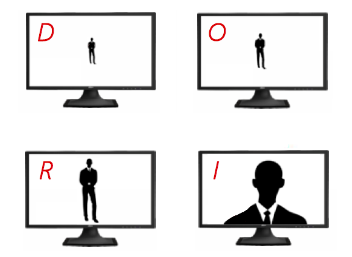What is DORI & how to use it in CCTV design
In the world of CCTV, DORI stands for Detection, Observation, Recognition and Identification.
Detection - The detection level allows for reliable and easy determination of whether a person or vehicle is present.
Observation - The observation level gives characteristic details of an individual, such as distinctive clothing, while allowing a view of activity surrounding an incident.
Recognition - The recognition level determines with a high degree of certainty whether an individual shown is the same as someone that has been seen before.
Identify - The identification level enables the identity of an individual beyond a reasonable doubt.
What is the DORI standard system?
The DORI standard system (based on the IEC EN62676-4: 2015 International Standard) defines different levels of detail for Detection (25PPM), Observation (62PPM), Recognition (125PPM), and Identification (250PPM) for visible light surveillance cameras. By using these PPM values, it is possible to rate cameras by sensor/lens combination and verify that it will provide the performance needed in each application. Manufacturers often display the minimum DORI results on their cameras datasheets.
See this link for more details on DORI system
When and why use DORI results?
The DORI distance is a “general proximity” of distance which makes it easy to pinpoint the right camera for your needs.
For example, here are the DORI distances for the same 4.0MP camera with 2.8mm, 3.6mm, and 6mm lenses:
From above you can see that a 4.0MP camera with 6mm lens can identify someone at 12m whereas a 2.8mm lens requires the person to be 4m from the lens to identify them. This is due to pixel density being much higher on the sensor with the 6mm lens.
Increasing the pixel count increases the distance over which a person could be identified. An 8.0MP camera with 2.8mm lens has the following DORI Distance: Detect (25px/m) 69m, Observe (63px/m) 28m, Recognise (125px/m) 14m, Identify (250px/m) 7m. As you can see this is an improvement on the 4MP camera with the same lens increasing the Identify distance from 4m to 7m. If you wanted a wide view and the ability to identify someone 7m from the camera you would choose the 8MP camera in this case. Of course you could choose a motorised camera that allows you to adjust the lens to maximise the use of the sensor by only recording the area or object and not extra space around it (remember – reducing the field of view increases pixel density).
So DORI Distance gives a quick and easy way to choose the most suitable camera for the object or area we are observing and the level of detail we wish to record.
Still need help?
SmartCamera are specialists in AI CCTV, and provide a CCTV support service & install service for UK-based customers.



